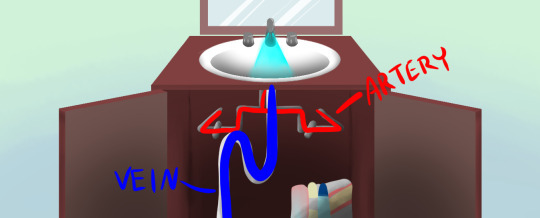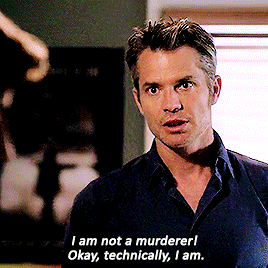inspo & random bits from the graphic novel I haven't written (yet?) property of me. and my co conspirator. Do not steal. k thanks bye.
Don't wanna be here? Send us removal request.
Photo

A little writing is better than no writing!!! I can’t stress this enough!! ANY WRITING IS BETTER THAN NO WRITING!!!!!
you’re all writers, whether you write 5,000 words in a day or 50.
57K notes
·
View notes
Text
For Tommy
Merchant shipping includes cargo ships, passenger ships, and tankers. Cargo ships can be either liners, which travel on established routes at regular intervals between specified ports; or tramps, which instead take cargo where and when it offers and to any port. Some of the newer types of cargo ships are bulk carriers, which transport ores or other dry cargoes in bulk; container ships, which handle standardized containers in a highly mechanized fashion; and roll-on, roll-off ships, which handle cargoes through their bow or stern ports. Passenger ships include ocean liners (which have now largely been supplanted by jet aircraft for transoceanic travel), cruise ships, and ferries. Tankers are used to transport crude oil, oil-based fuels, and natural gas.
Today, the vast majority of non-bulk cargo is transported in intermodal containers.[7] The containers arrive at a port by truck, rail, or another ship and are stacked in the port's storage area. When the ship that will be transporting them arrives, the containers that it is offloading are unloaded by a crane. The containers either leave the port by truck or rail or are put in the storage area until they are put on another ship. Once the ship is offloaded, the containers it is leaving with are brought to the dock by truck. A crane lifts the containers from the trucks into the ship. As the containers pile up in the ship, the workers connect them to the ship and to each other. The jobs involved include the crane operators, the workers who connect the containers to the ship and each other, the truck drivers that transport the containers from the dock and storage area, the workers who track the containers in the storage area as they are loaded and unloaded, as well as various supervisors. Those workers at the port who handle and move the containers are likely to be considered stevedores or longshoremen.

1 note
·
View note
Text
Tattoos/Branding
🎲🔫 🌙


Order of appearance: Rollers, Runners, Nightcrawlers, Distributors(branded S), Ravagers
These markings are on each member of the specified groups though there are individual variations as far as placement and design. For example, runners tend to get their favorite gun tattooed on them. It could be tattooed on any part of their body in any color ink and the sizing also ranges as well. Same goes for the other groups although there is less variation in the distributor organization because they are all branded with the letter S
2 notes
·
View notes
Text
Character Study #2- Daisy Swan
Things they would like: Books, New Clothing/shoes/Lingerie, Cuddly pets, Thrill seeking activities (bungee jumping, cliff diving, roller coasters etc), handwritten notes & letters
Food they would eat: Cupcakes, Sandwiches, Pizza, Salads, Sushi, Crepes
Places they like to Go: Frank's Cafe, Parties, Arden's Garden, Shadowplex Theatre, Bookstores, Archer Gun Range
Places they dream of going: India
Elements of their culture:
Elements of their religion: No religion, Raised Catholic
Color Palettes that Fit them:

Quotes that relate to them:
0 notes
Text
Character Study #1 Sebastian Archer
Things they would like: Guns, Custom Tailored Suits
Food they would eat: Pasta, Pancakes, Tacos, Steak, Chili
Places they like to go in the city:
Places they dream of going in the world: Nowhere in particular
Elements of their culture: Russian ancestry/influences
Elements of their religion: No religion. Raised in a protestant family
Color Palettes that fit them:

Quotes that Relate to them:
0 notes
Text

Always the same story
Credit for the original comic goes to superelmer
4K notes
·
View notes
Photo

No really.
Taking the bullet out does nothing to help the person, and if your characters are in the field instead of a hospital, may actually cause more harm than good.
Imagine for a moment that you (for reasons unknown to all) decided to turn your sink on wide open, pick up a handgun, and shoot the pipes under your sink.
Maybe it hit the drain pipe, which would be bad, since all the water coming through the faucet is now dribbling out all over the floor. But even worse would be if it hit the water intake pipe, right? In that case, water under high pressure would be spraying everywhere!
Two bad options if you for some reason shoot your sink:

The vascular system of the human body is essentially one big set of pipes. The drain pipe? Those would be veins—under low pressure, but still very bad to leak from. The water intake pipe? Those would be the arteries—under high pressure and VERY dangerous to puncture.

But back to the sink example. Say you shot the pipes and hit the drain pipe (vein). Now there’s water pouring out onto the floor. Your roommate says “Quick! Wrap your hand around the pipe to hold the water in!” (“Put pressure on the wound!”) And you do! Water is still slipping out from under your hand, but it’s leaking a lot less than before! Right now, you COULD find some duct tape (bandages) and secure the pipe further so you don’t have to keep holding it.

Instead, however, you say to your roommate: “Hold on! I’ve got to find the bullet!” You let go of the pipe (stop putting pressure on the wound) to dig around in the cabinet (body) for the bullet. Seconds, maybe even minutes pass, and that pipe is freely gushing out water the whole time.

Finally, you find it! You pry the bullet out of the wood, hold it up to your roommate, and drop it in a little metal dish with a ‘clink’.
“Job well done,” you tell yourself. “We’re out of the woods now.”
Except that, you know, the pipe is still damaged and gushing water out onto the floor, and the bullet wasn’t actually doing anything harmful inside the cabinet. Also, while you were rummaging around for little Houdini, you weren’t putting pressure on the pipe, so that sink (patient) lost a whole lot of water (blood) that it didn’t need to. Can you imagine how much more it would have been if you’d hit the water intake pipe (artery) instead?
I know what you’re thinking. “But in movies—!!” And I know. But here’s the thing: Hollywood? It’s a bouquet of lies. I’m sorry. I really am.
In fact, even that distinctly bullet-shaped thing you usually see pulled out of people in movies may not always be true. Many times the bullet mushrooms out or becomes malformed. Depending on what that bullet ran into (like bone) it might have even broken into a dozen pieces. Try digging those out of your protagonist!
Now sometimes, but not always, doctors WILL remove the bullet (or fragments of bullet). For example, if they’ve already got the patient in surgery, and AFTER they’ve already repaired any veins, arteries, and organs to the best of their ability. Or if the patient doesn’t need surgery (if it didn’t hit anything major and is just lodged in the muscle or fat) but doctors notice that the bullet or fragment is likely to cause damage if left inside the patient.
More often than not, however, the bullet isn’t doing anything actively damaging while inside the patient, or the removal of the bullet would be more dangerous than leaving it where it is. This is why most bullets don’t get removed at all.
This is true if your characters are at a hospital, but ESPECIALLY if this is a field job. If trained physicians with all the tools at their disposal, blood transfusions, and a sterile environment most likely won’t take the bullet out, then Dave McSide-Character should DEFINITELY not be sticking his filthy, 5-straight-chapters-of-parkour fingers or his I-just-stabbed-a-guy-but-I-wiped-the-blood-off-on-my-pants knife inside the protagonist to fish around for some bullet that isn’t even causing harm. The recommended way to deal with a gunshot wound in the field? Pack it with gauze (or yes, even a filthy we’ve-been-on-the-run-for-two-weeks-in-the-same-clothes t-shirt if that’s all you have. Wound infection is a different post) and keep constant pressure on it.
Remember: stopping the leak in the sink is the most important thing. Not rummaging around in the cabinet for the bullet. Taking it out does literally nothing.
Two perfectly realistic reasons why you might have a character take the bullet out:
Now, sometimes, depending on the characters or the world you’re writing in, this might be different. In some instances, you might want to write the lead-scavenger-hunt scene in!
The first reason is if they just don’t know
And that’s really important when writing realistically. Not everyone is a professional in emergency wound care. Most people get all their knowledge of emergency medicine from Grey’s Anatomy and House M.D.
If your character has any medical training? Probably don’t do it
If your character has any military or police training? Some know, some don’t, so writing it either way is believable. It’s a toss-up, but they DO have more experience with gunshot wounds (either personally, witnessed, or in training videos and word of mouth)
If your character is a 17-year-old art student who saw blood for the very first time two chapters ago? Well now that character might just try digging for the bullet
And hey, maybe they’re like “I’m gonna get the bullet out!” but another character (the one who was shot, another character in the room, maybe even a 911 operator) steps in and says “No, no, no! Just put pressure on it!”
But regardless, injured characters in movies are always suddenly on the mend after the bullet is taken out. The vitals start to rise, they aren’t gasping for breath, their hand closes firmly around the love-interest’s hand, etc. And this doesn’t happen. Regardless of what your character does, the rules of biology are still in play.
In the end, though, that bullet’s just minding its own business in there. The #1 priority is fixing the damage it caused on the way in.
The second reason is if the bullet is special
This is more for the SciFi/Fantasy writers.
If your character is a werewolf and was just shot by a silver bullet which is stopping their healing process and is slowly killing them? Yeah, take it out
If the bullet is actually some sort of tiny robot designed to burrow into their organs one by one? Yeah, take it out.
If the bullet had a spell or curse placed on it? Yeah, take it out.
If they need to get transported up to the med bay, but the bullet would cause some kind of issue with the transporters? Yeah, take it out.
But in all of these examples, the bullet has to be inherently dangerous. For normal humans with normal bullets, its just a hunk of lead.
Hope this helped some of you action writers out there!
Good luck and good writing!
Disclaimer: In the event that you or someone you know has been shot, the best thing to do for them is call for an ambulance and follow the instructions provided by the operator. This post is intended to give accurate writing advice to authors and script writers, but I am not a medical professional. While I do believe that the research that I’ve done on this topic is factually accurate, it should not be taken as actual medical advice.
7K notes
·
View notes
Text
Quick Tips for Writing Romance
Consider what your characters like about each other
Compliment their personalities. How can character A help with character B’s weaknesses?
Create boundaries
Make the characters notice each other’s quirks
Have your characters get annoyed by some of their quirks
Go slow on getting them together
Build trust between characters
Give them a life outside of their relationship
Let your characters be vulnerable in front of each other
Have scenes where they’re helping each other
What makes your characters want to stay together?
If your romance is a sub-plot, how much attention to they give the other character?
What does character A notice about character B?
I post writing tips and advice. Follow me for more posts like this.
11K notes
·
View notes
Text
Tips for fight scenes
If you get punched in the nose your eyes will water, a lot, even if it didn’t really hurt
Your body follows your head, your head gets pushed one way and your body will want to go that way
Getting hit in the stomach isn’t good, it hurts, getting hit in the diaphragm is worse. Causes your lungs to kinda spasm and make it hard to breathe (diaphragm is between stomach and chest)
When fighting a larger person they will have an easier time forcing you back
The jaw is the knockout button. Hit it hard enough and down for the count
Back of the head is very vulnerable, can cause serious damage if hit there
Kidney punches. They hurt. A lot.
People with experience will try to be where they are comfortable. A wrestler will try to get their opponent on the ground, a boxer will stay on their feet, etc.
Easiest counter to a kick is to get closer to whoever is throwing it, then they won’t have enough room for it to be effective
If you want realism, avoid fancy, flashy moves. They’re less practical and easier to counter.
48K notes
·
View notes








